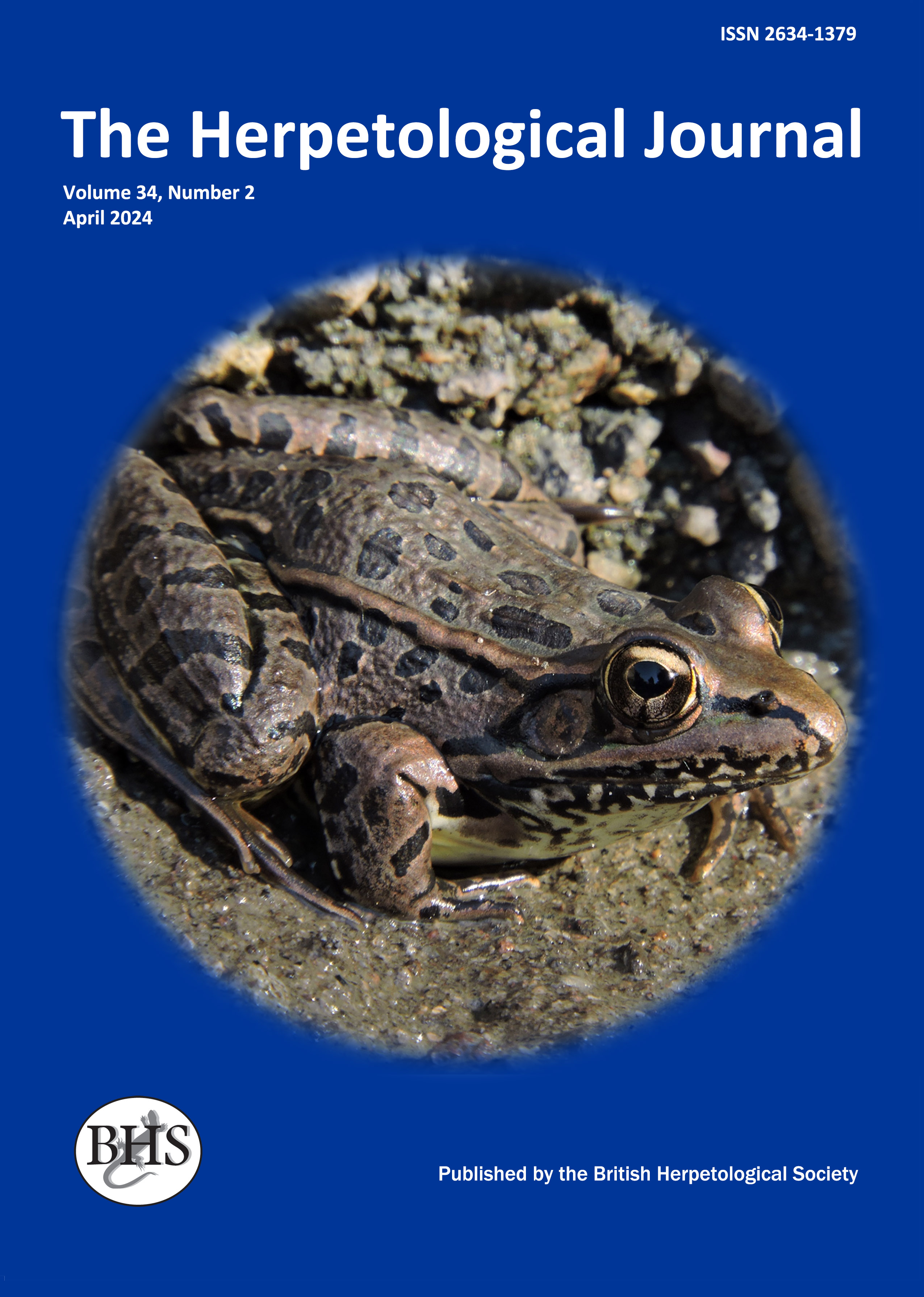
The Herpetological Journal
The Herpetological Journal is the Society's prestigious quarterly scientific journal. Articles are listed in Biological Abstracts, Current Awareness in Biological Sciences,Current Contents, Science Citation Index, and Zoological Record.
ISSN 0268-0130
2021 Impact Factor from Clarivate for the Herpetological Journal is 1.194, an increase of 0.332 from 2020.
pdf 05. Matrix permeability of agricultural landscapes: an analysis of movements of the common frog (Rana temporaria)
1431 downloads
Open Access
pp. 174-182
Authors: Vos, Claire C.; Goedhart, Paul W.; Lammertsma, Dennis R. & Spitzen-Van der Sluijs, Annemarieke M.
Abstract: The implications of habitat fragmentation go beyond changes in the size and composition of suitable habitat patches. In fragmented landscapes, #matrix##permeability# influences the dispersal of organisms, thereby affecting the persistence of populations in such landscapes. We investigated the effect of habitat composition on the movement of adult and recently metamorphosed juvenile common frogs (Rana temporaria) emigrating from a pond in an agricultural landscape. One question driving our research was: do the numbers of captured individuals differ between habitat types? Such a difference would indicate avoidance of or preference for certain habitats. A subsidiary question was: does the response to landscape composition differ between adults and juveniles? We found significant differences in the numbers of frogs trapped in various habitat types. Adult and juvenile common frogs preferred extensive meadows and hedgerows above other habitat types. Arable land was the most avoided habitat type, but short-cut pastures and road verges were also avoided. For instance, almost 10 times more juveniles and four times more adults were caught in meadows than in arable land. Hedgerows were also frequented often, with four times more juveniles and 2.2 times more adults captured compared to arable land. Juveniles displayed more clear-cut preference and avoidance of habitat types than adults. These findings suggest that intensively farmed landscapes form a larger barrier for juveniles than for adults, from which we conclude that different life stages of the same species may react differently to matrix composition. The demonstrated influence of matrix composition on frog dispersal underlines the importance of having well-connected habitat networks to ensure the sustainability of amphibian communities in agricultural landscapes.
Keywords: FIELD EXPERIMENT, CONNECTIVITY, NATURE CONSERVATION, BEHAVIOUR, AMPHIBIANS, HABITAT FRAGMENTATION, DISPERSAL

